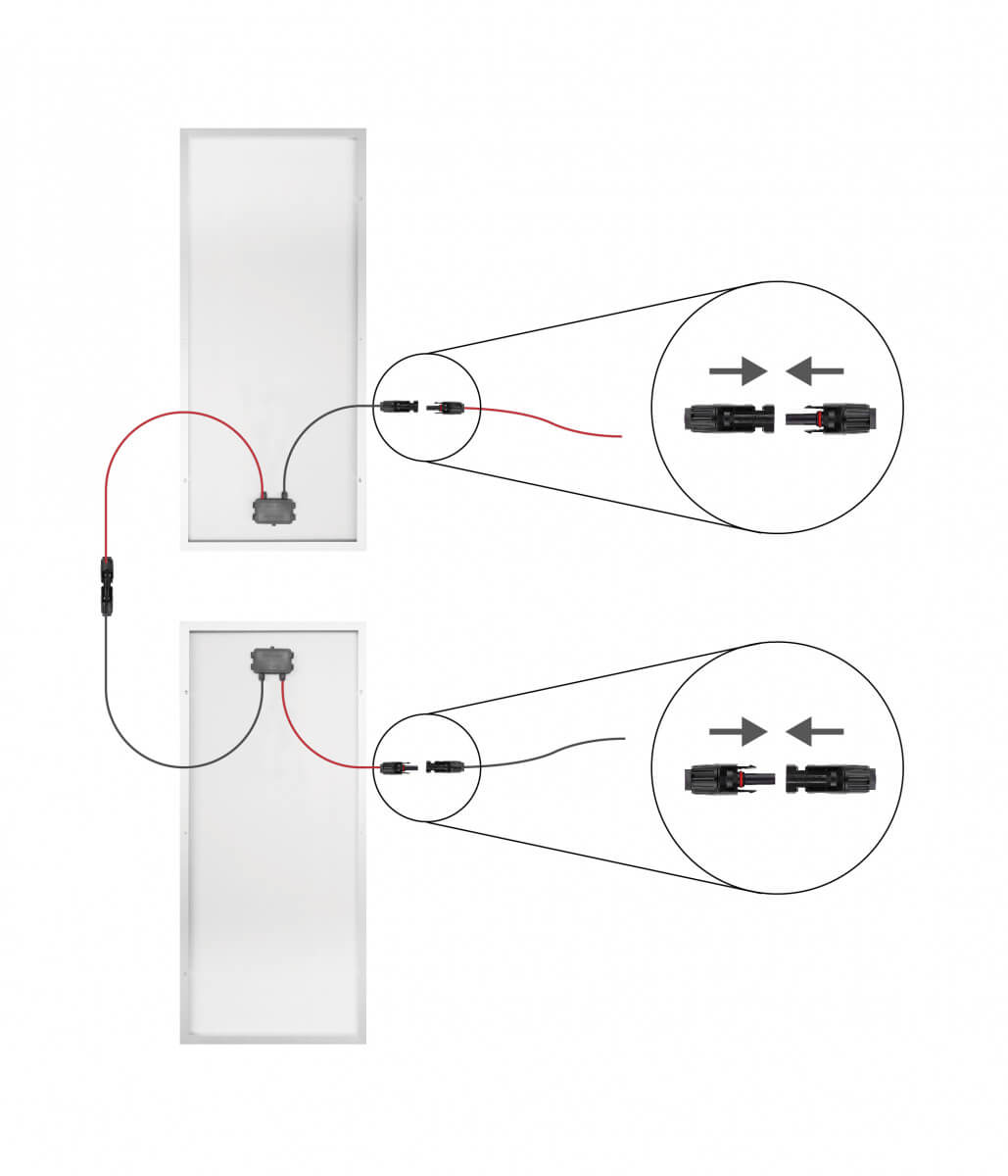CONNECTING YOUR PANELS IN SERIES OR PARALLEL?
2nd Sep 2020
After buying several panels and a bunch of accessories, many might be wondering ‘now what?’. Putting the right components together can sometimes be confusing, especially when you want to connect several panels and need to sort out the wiring. In this blog, we will discuss whether you should connect your panels in series or parallel based on different circumstances.
Series Circuit
What is a Series Circuit?
In a series circuit, the resistors are arranged in a chain. It means the current will go through each component and has only one route to travel through the circuit. In a circuit like this, each of the components will carry the same current when they are connected in series. In terms of the voltage, the system voltage would be the sum of the voltage of each component.
Solar Panels in Series
The same formula applies when the solar panels are put in series. In a series system, each panel is wired to the next. The position terminal of one panel is connected to the negative side of the next panel. Just like the theory mentioned before, the amperage would remain the same for each of the panel, while the voltage of each panel would be added and become the system voltage.
Series Connection and Guidance to Set Up
The positive pole of the solar panel is connected with the negative pole of the front solar panel, and the negative pole is connected with the positive pole of the next solar panel.
The voltage of the photovoltaic array connected in series is equal to the sum of the voltage of all solar panels, and its current is equal to the current of a single solar panel.
Parallel Circuits
What is a parallel circuit?
The circuit that is in parallel refers to when the components are connected with their heads together, then tails together. In this case, the current has multiple routes to travel. In a system that is in parallel, the voltage would be the same for each component.
For the current, it would depend on how many resistors/components that are in the system. In short, the amperage in a parallel system would be additive.
Solar Panels in Parallel
To put it in solar terms, a parallel circuit refers to when each panel’s connector are wired to a centralized cable. The amperage of the system would be the sum of the current value of each component. However, the system voltage will stay the same.
Parallel Connection and Guidance to Set Up
All the positive poles of the solar panels are connected together by a combined connector, and all the negative poles are connected together by a combined connector.
The current of a parallel photovoltaic array is equal to the sum of the current of all solar panels, and its voltage is equal to the voltage of a single solar panel
Series vs. Parallel
So which option is better? There is no definitive answer. Wiring in either series or parallel would largely depend on your system voltage and amperage requirement. By using series or parallel connection, you can manipulate these rates to achieve the most optimal arrangements.
Based on our experience, parallel wiring is a more popular choice from our end users. One major advantage is the parallel wiring is more efficient to ensure continuous operation, due to the nature of parallel circuit. In other words, if one of the components in the system breaks down, the rest of the system can still function since there are more than one routes for the current to travel.
[dib_prod_4503697981514]
Overall, whether using series or parallel would depend on how to balance the voltage and amperage so you could achieve the highest output possible. You can check out Newpowa cables connection for some more ideas.


